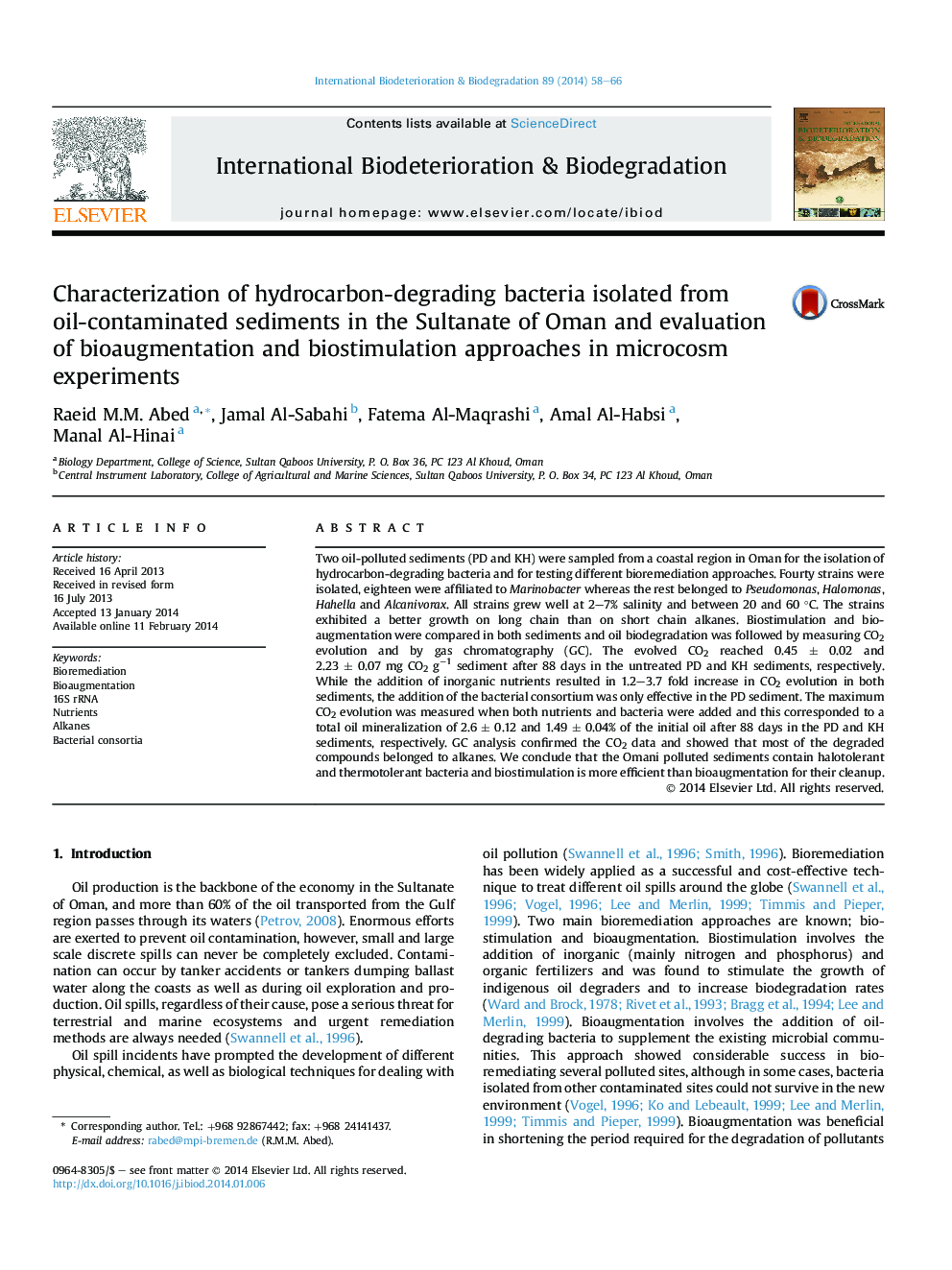| کد مقاله | کد نشریه | سال انتشار | مقاله انگلیسی | نسخه تمام متن |
|---|---|---|---|---|
| 4364838 | 1616327 | 2014 | 9 صفحه PDF | دانلود رایگان |
• The Omani oil polluted sediments contain halotolerant and thermotolerant bacteria.
• Biostimulation is more efficient than bioaugmentation for cleaning polluted soils.
• CO2 evolution is a reliable technique to follow up the degradation of hydrocarbons.
• The cleanup of oil-polluted sites in Oman by bioremediation requires a lot of time.
Two oil-polluted sediments (PD and KH) were sampled from a coastal region in Oman for the isolation of hydrocarbon-degrading bacteria and for testing different bioremediation approaches. Fourty strains were isolated, eighteen were affiliated to Marinobacter whereas the rest belonged to Pseudomonas, Halomonas, Hahella and Alcanivorax. All strains grew well at 2–7% salinity and between 20 and 60 °C. The strains exhibited a better growth on long chain than on short chain alkanes. Biostimulation and bioaugmentation were compared in both sediments and oil biodegradation was followed by measuring CO2 evolution and by gas chromatography (GC). The evolved CO2 reached 0.45 ± 0.02 and 2.23 ± 0.07 mg CO2 g−1 sediment after 88 days in the untreated PD and KH sediments, respectively. While the addition of inorganic nutrients resulted in 1.2–3.7 fold increase in CO2 evolution in both sediments, the addition of the bacterial consortium was only effective in the PD sediment. The maximum CO2 evolution was measured when both nutrients and bacteria were added and this corresponded to a total oil mineralization of 2.6 ± 0.12 and 1.49 ± 0.04% of the initial oil after 88 days in the PD and KH sediments, respectively. GC analysis confirmed the CO2 data and showed that most of the degraded compounds belonged to alkanes. We conclude that the Omani polluted sediments contain halotolerant and thermotolerant bacteria and biostimulation is more efficient than bioaugmentation for their cleanup.
Journal: International Biodeterioration & Biodegradation - Volume 89, April 2014, Pages 58–66
